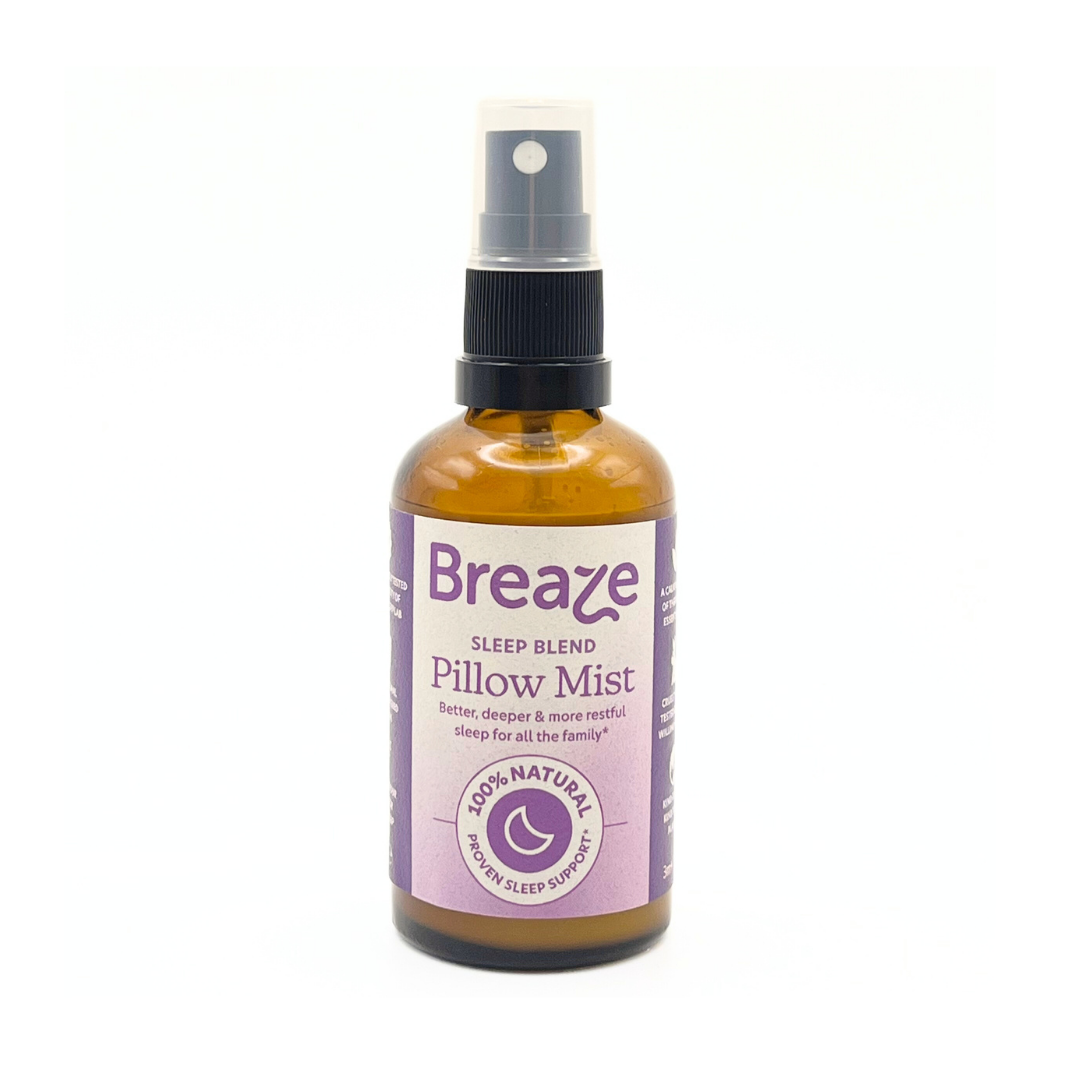The power of essential oils for hay fever - Lemon
Whenever we develop a new product, every ingredient is extensively researched and selected for its scientifically backed and longstanding use in traditional remedies.
Breaze Hay Fever support products are based on a complex functional aromatherapy formulation of 10 essential oils and botanical ingredients. Each plays an important role, and together they’re proven to help you breathe easier and sleep better when hay fever and allergies strike. ¹
In this series, we’re taking a deep dive on our functional ingredients to explain the history, heritage, and science behind each, and to show how it earned its place in our award-winning formulation.
Lemon. Citrus Limonum

Lemons are one of the most popular fruits in the world and the essential oil extracted from its skin is renowned for providing a host of health benefits. Over the years it has been labelled as ‘the fruit of health’ and ‘liquid sunshine’ with its bright and effervescent scent commonly associated with energy, positivity and cleanliness.
Lemons, like most citrus fruits, grow from a particular type of evergreen tree scientifically known as Citrus Limon, thriving best in tropical climates that offer substantial amounts of heat and humidity. They can grow up to 33 feet in height, and their branches have thorns and shiny green leaves. The oil is pale yellow with a fresh, citrusy scent and made by extracting the peel from fresh lemon and using a cold press to prick and rotate the peel.
Lemons are packed with antioxidants like vitamin C and known for their antibacterial and antimicrobial properties. Its benefits are derived from a variety of compounds, such as limonene and pinene. Limonene has been shown to provide antioxidant and anti-inflammatory properties and is responsible for the fruit’s distinct scent. ²
Often the basis for fragrance and cleaning products, it’s easy to pigeonhole Lemon essential oil as no more than a useful natural antibacterial. But its pedigree and history as a healing herb go much further than that.
The origin of Lemons remains unknown, but it’s believed that they originated in Southeast Asia. By 200 B.C., they made their way to Southern Italy and in 700 B.C., were being cultivated in Iran, Iraq, and Egypt. Arab traders began distributing them around the Mediterranean and they eventually made their way to the US when Christopher Columbus planted Lemon seeds on the island of Hispaniola in 1493. ³
The name Lemon is based on the Old French word ‘Limon’ and the Italian term ‘Limone’.

In the mid-18th century, James Lind found the vitamin C content in Lemons was an effective treatment for scurvy, so the Royal Navy consumed Lemon juice daily to combat this. ⁴ Ancient Egyptians and Romans also used Lemons to treat common illnesses such as colds, fevers and protect against poison. Jewish midwives would use Lemon oil to help ease pregnancy and facilitate birth, whilst the Chinese were using it to treat a variety of illnesses such as bronchitis, parasites, bleeding gums, malaria and heartburn. Europeans used Lemons to treat seasickness, gastrointestinal disorders and migraines. ⁵
Today, Lemon essential oil is used in skincare, cleaning products and is praised for its ability to brighten mood, improve focus and promote easier breathing.
Lemon is central to our formulation for its natural anti-inflammatory properties that can help reduce swelling and irritation in the respiratory tract. In one study⁶, it was found that a Lemon-based nasal spray helped in the treatment of perennial and seasonal allergic rhinitis, whilst another⁷ found it to inhibit inflammation.
So, whether you create a natural surface cleaner, inhale its uplifting aromas or plant a fragrant, evergreen tree, Lemon is one of the most versatile and popular oils around today.
¹ Breaze user trial 2020 82% of users said that Breaze helped with hay fever symptoms
² https://pubmed.ncbi.nlm.nih.gov/29427589/
³ https://jerryjamesstone.com/how-to/history-of-lemons-what-am-i-even-eating/
⁴ https://www.bbc.co.uk/news/uk-england-37320399
⁶ https://onlinelibrary.wiley.com/doi/full/10.5402/2012/404606
⁷ https://pmc.ncbi.nlm.nih.gov/articles/PMC3671226/


